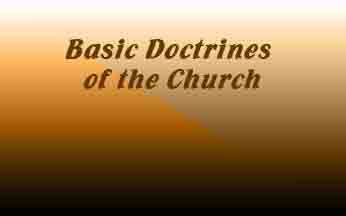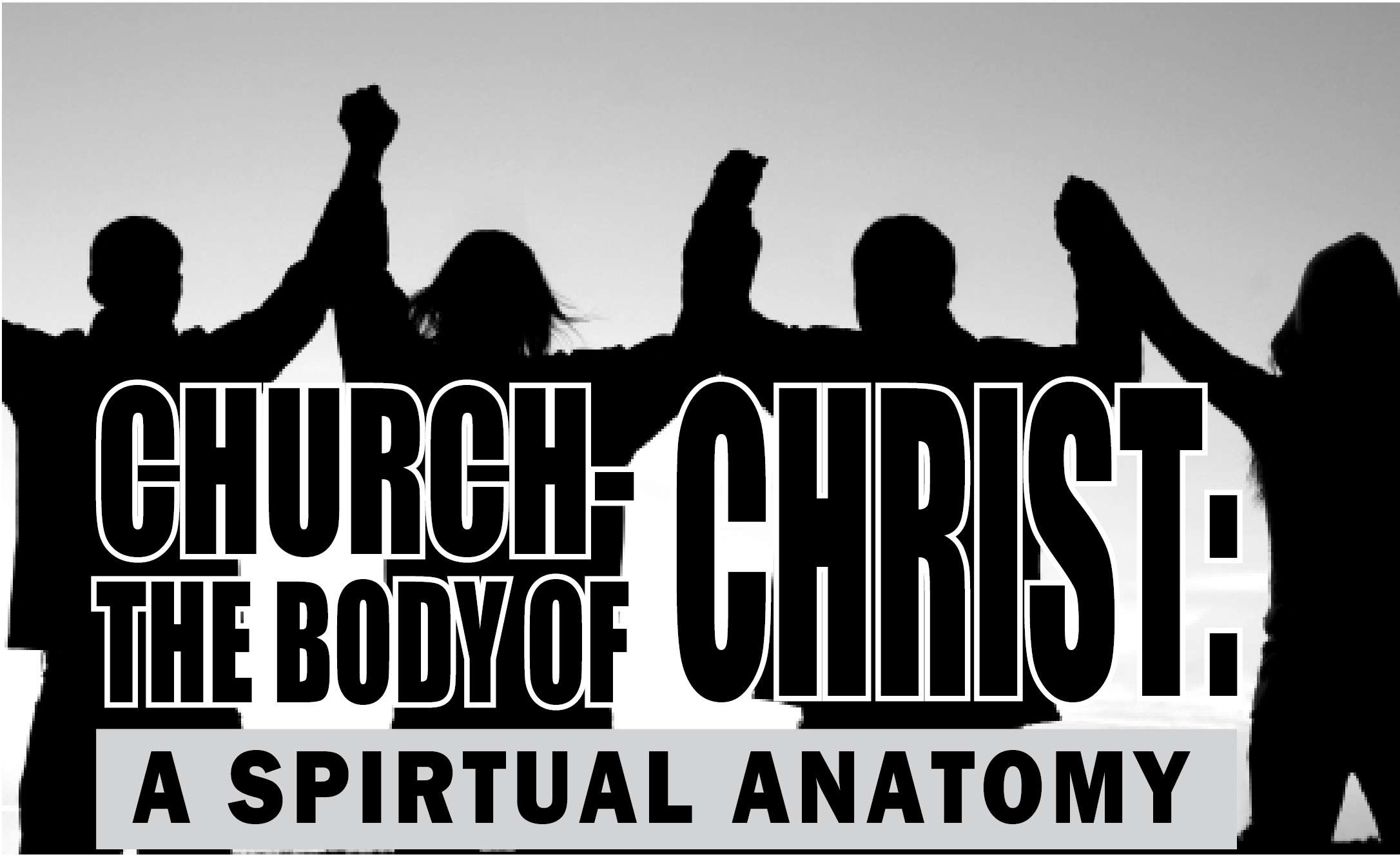

Church - the Body of Christ: A Spiritual Anatomy
Dr. T. P. Varughese
The word 'Church' is derived from the Greek words like 'ekklesia' and 'kuriakon' provide the meaning 'Assembly', belongs to the Lord respectively. The Malayalam word 'Sabha' also represents an Assembly which has no bearing of a Christian church necessarily. In this modern age, the structure of a church building is being equated with the church and not necessarily the people gathered for the worship. People go to church not only for worship but also for identity. This is become significantly true not only of Episcopalian churches, but even also evangelicals including Pentecostals. The church is no longer looked upon as the sole embodiment of the divine presence and activity. In this article, the emphasis is given to the Pauline understanding of ‘CHURCH’ as the body of Christ. This is explained through 1 Cor. 12-12-26. This can perhaps be the best biblical image for the church as it is portrayed by Paul.
The image of the church as the body of Christ reveals that the main focus of the action of the church is on this earth. It can include both the local and universal activities. This is what Paul reiterates in 1 Cor. 12:26,27. “Now you are the body of Christ and individually members of it”.
A. The Anatomy of the Body of Christ
Paul’s concern here is expressed mainly from 1 Cor. 12: 12-26. He expresses it after discussing the distribution of spiritual gifts to the members of the body of Christ. The main concern of the passage is that the body is one, though with many members, having a unity in diversity. The emphasis is not on unity rather it is on diversity by which the best use of unity could be maintained. Even though the body is one, it does not consist of one member but of many, thus arguing for diversity (12-24). Then the natural question will be, how is this possible in the midst of diversity? If the body is one how is the diversity possible? If diversity is to be maintained, how can unity can be achieved? To answer this logical and hard question, Paul answers in ver. 13 that all of them were immersed in and made to drink the same Spirit. The one body is not one member but many members, in the Spirit of God and drinking from the same Spirit, functioning as one, though existing as many members. What a divine activity! The explanation returns to the imagery of the church as the body of Christ as it is used in 1 Cor.10:17 and 11:29. It is expected of every believer to participate in the Lord’s Supper discerning that the body of Christ is one and not divided.
The image of the body of Christ emphasizes the close connection of the believers with Christ. Christ is the head of this body (Col. 1:18) of which believers are parts or members. All things including all believers, are brought under one head, Christ Eph. 1:10). Christ, the head takes care of all believers and nourishes them (Col.2:19). As the head, He not only takes care of them, but also guides, rules and even corrects them (Col. 2: 9,10).
The body imagery was common in the ancient world and was therefore probably well known to the Corinthians. Paul’s concern here is essential unity, not uniformity. His intention of unity is to be seen from a different angle. It is not that all are becoming one as a single unity of monstrosity but a unity comprehending the diversity working towards the unity of function. The Corinthian error was the expectation of uniformity. Uniformity is not spirituality. In this modern era, the Christian churches try hard to bring uniformity without unity. They falsely think that it is the uniformity that God wants. For to achieve uniformity, modern techniques are used in the churches and between like-minded denominations. Even Pentecostals try for uniformity without unity, hence the so called UPFs without unity among them. It was unfortunate to witness such events in many places and often the leaders take active roles for such instances. In the beginning they may work well, but as they go by many of them fall apart. However, this may not be true for all of them. Paul was not concerned of uniformity, but true unity in his passage. There is no true unity without diversity. The church is the shortened form for the body of Christ.
The image of the body of Christ speaks of the “interconnectedness between all the persons who make up the church” says Erickson (Christian Theology, 1994, p. 1037). Christian faith and life is not isolated. Paul emphasizes the interconnectedness of each believer to complete the unity in Christ (1 Cor. 12:12). As mentioned earlier this is made possible through the drinking from the one Spirit. Gifts are diverse but not the Spirit; therefore there is no disunity in the body of Christ. Taking gifts as the basic topic of discussion in 1 Cor.12, diversity in the unity is further strengthened. No one gift is for every one which means no one person has all the gifts. Each member needs others and each is needed by the others, hence diversity demands the unity. Each believer encourages and builds up others in Christ. There in Christ, the old distinctions have been obliterated, but not in the sense that the distinctions have no more significance. It is the significance that gives them value as distinctions. In effect, the life in the Spirit eliminated the old distinctions, hence they have become one body. Even though, the body is one by the common experience of the Spirit (v.13), the body itself is not the one but many parts. The one body is not the one member, rather composed of many constituent parts.
Paul goes further in ver. 17&19 that all members are necessary, if there is to be a body. If one member grows to the size of a body, it is not a body but a monster. The “bodiness” is then lost. Every expression then will be of a monster and not of a member. The activity also will be monstrous in nature. Body always must have the character of many members. In many churches we see such monster signs due to ‘one –man’ member hierarchy which produces monstrous actions. This is also true of many denominations and organizations. The member-unity will not be seen active there. Only the body can exercise various gifts. Diversity in unity is the emphasis of Pauline body-imagery.
In Pauline explanation of the body there are many members like legs, hands, eyes, ears etc. Through the analogy of the body, Paul emphasizes the need of all members. The full-pledged function of the body is possible only with all members. The diversity in the body is God’s own design.
1 Cor. 12:18 teaches that God has arranged the parts of the body, every one of them, just as God wanted them to be. The very order we see in the body is also God’s plan. Diversity is not an end in itself, but is to function within their essential unity.
Through change of metaphors, still using the same body parts, Paul proceeds further to the need of existing together in the same body. Some people of superior rank (either in their own thinking or in the worldly calculation) think that they can get along without others in this body of Christ. But Paul says “those parts of the body that seem to be weaker are the more indispensable”. For example, the internal organs of the body by nature, are weak, but we cannot exist without them. They are surely indispensable. Crucial to this argument is the fact that they only seem to be weaker. Such apparent weakness has no relationship to their real value and necessity to the body. Remember! Appearances are deceiving. If, in any case, one removes such an organ because it appeared weak, the body would cease to be the whole and will stop to function. This is true also of the Church.
Paul continued his change of metaphors, though not named individually, to sexual organs on which we bestow greater honour, so they have greater decorum. This is the secret of the dignity of the body of Christ. Those organs are important for the existence of the body, yet they are not exhibited as others publically. Paul tries to educate that bodily appearances are not the important factors, rather they are deceiving. 1 Cor. 12: 25, 26 teach us that the body is not composed not for show, but they are composed to have mutual concern for one another, not neglecting any member of the body. The activity of the member of the body should not be for the annihilation of another member in the same body, but for the strengthening and building up of each other member, and thus through each member the total body. If the building up of the body is not taking place even to one weak member of the body, then the function of the body member is not according to the will of God and the Word of God. No member of the body is to be inferior to another. Both weak and strong, honourable or less honourable are in their own way needed to make the body, otherwise, there will be no body but only a monster.
Discussing the reason for God composing the body is not for contrasting each other (v.21-24). This is why parts that appear to be lesser important get special treatment, since all are so vital to one another. God has arranged all members in such a way that there should be no strife among the members of the body who mutually need each other in order to function as a body. In other words, God’s concern for the body is equal. It is difficult for the body (church) to function properly when one part aches. The body may function with aches, but not properly. For example, when a person gets severe head ache or tooth pain, and if that person is attending a test or a final exam the next day morning, his or her performance will not be satisfactory. This is also true of a member getting the joy, and not properly the part of the body of Christ, the total body, the church will not be able to enjoy or share the joy. Paul is referring to this in 1Cor. 11:14. How can the body of Christ, the church enjoy the Lord’ supper when lack of the unity is experienced in the body?
Conclusion:The metaphor of the body for the church is the suitable one for the present scenario of the church. This example of the body is ready-made for the present time. Paul’s concern is for diversity-mutual concern in the body as in the case of spiritual gifts. The singular focus on one gift or selected couple of them by some Charismatic preachers or churches are cotrary to this. If a chance is given, they opt for prophecy, healings, and neglect the gifts of the word of wisdom or word of knowledge and so on. There are some who accept only cerebral gifts. By doing this bifurcation we destroy the diversity God intended for the body of Christ. Do not neglect the weak and lowly. Do not make monsters! Both will destroy the unity of the body of Christ.



